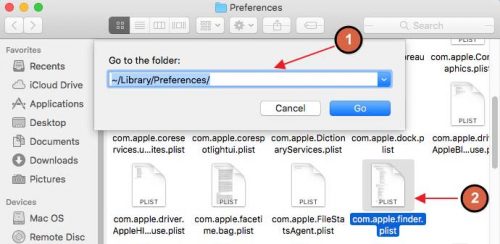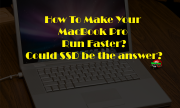

Finally, after you remove all the clutter, bring in all the apps that you use regularly and add those to the home screen for quick access. The result should look something like the screenshot above. Apps and Widgets can take up a lot of performance if you’re not careful, so go ahead and remove all the unnecessary app icons and widgets from your home screen and keep it clean. All you need to do is remove clutter from your home screen. You can check the percentage amount of CPU/Memory an app is using, and if something looks unnatural such as 60% use, then kill it to increase performance. Just press down Command + Spacebar, type in “Activity Monitor”, and hit the Return key. Note: You can also access “Activity Monitor” through Spotlight. You can also kill any misbehaving apps that are taking up too much performance.
HOW TO MAKE MAC RUN FASTER LAPTOP FREE
Finally, select all the apps you want to kill and click on the “X” button to kill the apps and free up some extra performance.Here you will see a list of running applications in the background and click on any that you want to kill. After your screen looks something like the screenshot above, go to the CPU tab.Next double click on “Activity Monitor” to get it running.Head on to your Applications folder and then on Utilities.The system monitoring solution is quite effective, and you can do this by: This can slow down your computer and if you’re not using the latest and greatest M1 Mac, expect to see some lags due to this. Most apps run in the background for better access, but they end up taking a whole lot of RAM and CPU usage. The following fix is not as easy as the first one, but it does help when you need that extra bit of performance. Use Activity Monitor to kill apps and background tasks However, if this doesn’t work, you can always look at the other following fixes below. Note: You can also just hold down the power button for a few seconds for a hard restart. Now, click on the “Restart” button and let your device restart.Click on the Apple button and bring up the drop-down box.Most apps and services can still keep on running and start hogging up all the resources, leading to slowdowns and lag.

If this is the case for you and your Mac is feeling slow right after you completed the installation and updated the OS, then the best and quick fix you can try is to restart your Mac. Now that you have identified the problem and made a backup for extra security, then let us get started with the ten easy and quick solutions to improving your Mac’s performance. You can make a backup by going into Time Machine settings and configure and schedule a backup. However, before you do that, you should always make a backup, so if something does go wrong, you can just use the backup and restore your device to the original condition. Make a Backup – After identifying the main issue, you can go ahead and fix the problem with the solutions below. Is there an incompatible app that is bugging your system, or is macOS having problems or bugs with its features? If this is the case, you should read below to check out all the best possible fixes on the market.
HOW TO MAKE MAC RUN FASTER LAPTOP SOFTWARE
Sofware problems – The next thing that you should be on the lookout for is whether an app or some other software is the central cause for the slowdowns. This is not something that you would be able to fix on your own or with software, and hence, taking it to someone who knows what they’re doing is the best possible solution. Hardware issues – If your device is having issues with the hard drive or heating issues that cause the performance to drop rapidly, we recommend you take it to an Apple Store to get some regular maintenance done.

So, the first thing you should be on the lookout for is: Before fixingīefore you get on to the fixes below, let’s do a little troubleshooting first and get to the root of the issue and make some smart choices to keep your data and device safe. There can be many reasons that your Macbook is feeling slow, and here are some solutions to get you back on track and improve your experience with your loved laptop or desktop. So is Monterey slow for you, as well? Well, if you’re still here reading about it, then the answer is most likely “Yes”, and here you are looking for solutions. People running the latest gen M1 Macbooks are loving the update, but people with older Intel devices can feel that their overall experience with macOS is slower than before.

However, not everyone is satisfied, and Beta updates have generally been buggy or slow. Apple’s new release of macOS Monterey Beta has brought a lot of new features that have taken the users by storm.


 0 kommentar(er)
0 kommentar(er)
